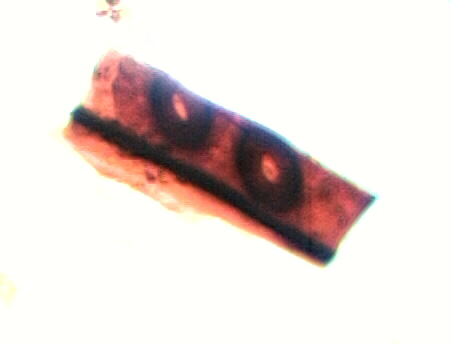Charred Softwood
The large, well separated pores (circular patterns)
identify this fragment as coming from a
conifer or softwood tree. The brown coloration indicates the loss of hydrogen in the
cellulose
that makes up the cell structure of the wood. That is the result in this case of
exposure to high
temperatures.
Transmitted Brightfield Illumination
Definition/Function:
Significance in the Environment:
This type of particle is common where softwoods are used as a fire wood and from
forest fires, slash burns, hog fuel boilers, or, more in the past, Tepi burners to
dispose of waste from
lumber mills. Charred wood is one of the more common airborne particles in urban and
suburban
environments.
Characteristic Features:
The large, well separated pores (circular patterns) identify this fragment as coming
from a
conifer or softwood tree. The brown coloration indicates the loss of hydrogen in the
cellulose
that makes up the cell structure of the wood. The most common cause is exposure to high
temperatures.
Associated Particles:
References:


